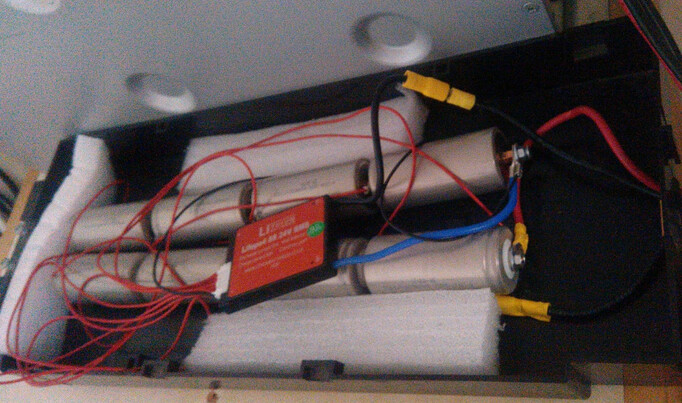Good morning everyone,
It took me a while to move over here as I was stuck in limbo trying to figure out where everyone disappeared to. It took me some Googling to end up finding a thread on MyBB with a link here and now I have arrived.
In any case. I had some discussions with @plonkster & @TheTerribleTriplet just over 2 years ago about a working from home backup system and I ended up settling on a Mecer trolley system that I bought in April last year (not necessarily what was recommended, but as I am renting and can’t really explain loadshedding to my German employer it was either that or a generator).
It is a Mecer IVR-2400LBKS 24v inverter and 2x 12V 100Ah Vision 6FM100-X AGM batteries. It’s always on, but only inverts when there’s a power outage.
They used to work perfectly fine and we could get through 4 hours of loadshedding and power outages without a problem or a beep from the inverter. I have got the trolley setup next to the TV which is also where the routers are and then the office is connected up to it which has a laptop and 2x monitors, an access point, NAS and also a PC with a monitor although the PC doesn’t get used when there’s a power outage. With loadshedding in the evenings we’ll have the TV on along with a bedside lamp that’s next to the TV and I’ll run an extension cord to the bedroom to have bedside lights and chargers up in the bedroom.
We had a power outage about a month ago (the newly upgraded Roosevelt Park substation is just wonderful) and after about 2 hours the low battery alarm sounded on the inverter. I had a look and could see the inverter’s battery level flashing on the 25% block (it’s basically got 4 blocks which indicates battery SoC with 25% being the last one). After simply switching off the TV which consumes just over 200W the low battery alarm disappeared and the battery SoC went back to the 75% block. The exact same thing happened again last night.
The power came on at 11pm last night and the inverter only stopped charging at 7am this morning (based on the fan running and the charging indicator being on). I know it’s trickling in the last bit and I can see that on the energy meter, but as this took half the time in the past I’m just mentioning this as part of what is happening.
My first thought was that the batteries are most likely dying and will have to be replaced, but I’m not sure if they may still be saved in case they are simply unbalanced and I thought I’d ask here before doing anything.
Does anyone have any recommendations on what to do? Does this sound like unbalanced batteries which means I can look at getting a battery balancer to try and resolve it or does it sound like dying batteries? I know the lead acid / AGM batteries won’t last forever, but I was hoping to get about 3 years from them as they’re only used when there are power outages and don’t get discharged to a low SoC.
My idea at the moment (based on what I’ve learned on the forums over the last couple of years) is that it would be best to buy a battery balancer and a BMV now to try and get them balanced (BMV to be able to monitor going forward) and if that doesn’t work or do much to then go ahead and replace the batteries which will then have a balancer and BMV from day 1.
We’re looking at moving into our own place around about this time next year with a blue system going in ~6 months later which is why I would prefer to make these last until then.
I might be getting ahead of myself here, but if the batteries are indeed dying and need to be replaced:
Is it OK to replace them with the same batteries and keep using the same inverter or should I look at other batteries and/or other inverters?


